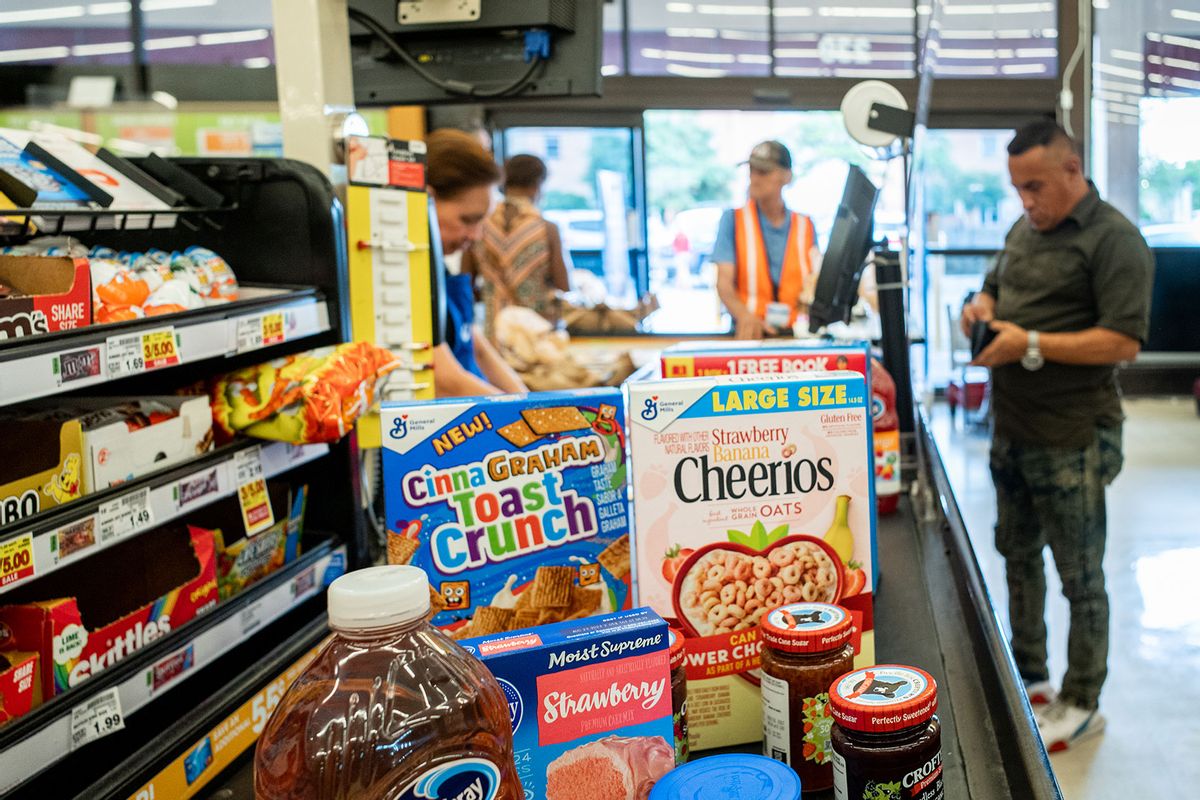The U.S. Food and Drug Administration (FDA) is demanding increased, in-your-face food transparency when it comes to nutrition labels. On Tuesday, the agency proposed a new requirement to include nutrition labels on the front of packaged foods and drinks in an effort to “[combat] the nation’s chronic disease crisis,” per a recent press release.
“If finalized, the proposal would give consumers readily visible information about a food’s saturated fat, sodium and added sugars content — three nutrients directly linked with chronic diseases when consumed in excess,” the FDA explained.
Formally called the “Nutrition Info box,” the proposed labeling system would detail the content of saturated fat, sodium and added sugars using three levels: Low, Medium and High. The new label would accompany the agency’s Nutrition Facts label, which details the amount of nutrients in each serving of packaged foods or drinks and typically appears on the back or sides of the packaging.
“The science on saturated fat, sodium and added sugars is clear,” FDA Commissioner Robert M. Califf, M.D., said in a statement. “Nearly everyone knows or cares for someone with a chronic disease that is due, in part, to the food we eat. It is time we make it easier for consumers to glance, grab and go. Adding front-of-package nutrition labeling to most packaged foods would do that. We are fully committed to pulling all the levers available to the FDA to make nutrition information readily accessible as part of our efforts to promote public health.”
Per the FDA, the latest proposal “is informed by a substantial body of research,” including a scientific literature review, consumer focus groups and a peer-reviewed experimental study all conducted by the agency. A 2023 experimental study consisting of nearly 10,000 U.S. adult participants analyzed consumer responses to three different types of front-of-packaging labels and identified which labels helped participants make “quicker and more accurate assessments of the healthfulness of a product.” The final results found that the traditional black-and-white Nutrition Info label with the percent Daily Value (%DV) was deemed the most efficient.
The need for stricter food labeling comes in the wake of rising health concerns related to diet and nutrition. Sixty percent of Americans have at least one chronic disease, the FDA reported. Individuals who consume high amounts of sugar and refined carbohydrates are at risk of suffering from chronic illnesses like type 2 diabetes, obesity and various metabolic syndromes, according to research from the University of California, Los Angeles. Diets high in both saturated fat and sugar can also increase the risk of kidney and liver diseases.
Want more great food writing and recipes? Subscribe to Salon Food's newsletter, The Bite.
The prevalence of ultra-processed foods (UPFs) has also reached an all-time high. Carlos Monteiro, the Brazilian epidemiologist who coined the term, told The Guardian back in July that UPFs are “increasing their share in and domination of global diets, despite the risk they represent to health in terms of increasing the risk of multiple chronic diseases.” An August study published in The Lancet Regional Health - Europe also suggested that ultra-processed plant-based foods — including plant-based snacks, burgers and dairy-free plant-based yogurts — could increase one’s risk of serious health conditions like heart attacks and strokes. The study found that every 10% increase in calories from ultra-processed plant-based foods was associated with a 5% higher risk of developing heart disease and a 6% higher risk of coronary heart disease.
“Food should be a vehicle for wellness, not a contributor of chronic disease,” Jim Jones, FDA Deputy Commissioner for Human Foods, said. “In addition to our goal of providing information to consumers, it’s possible we’ll see manufacturers reformulate products to be healthier in response to front-of-package nutrition labeling. Together, we hope the FDA’s efforts, alongside those of our federal partners, will start stemming the tide of the chronic disease crisis in our country.”
The FDA’s proposed Nutrition Info box is part of the White House National Strategy on Hunger, Nutrition and Health to reduce diet-related illnesses by 2030. If approved and finalized, the proposal would require food businesses with $10 million or more in annual food sales to include a Nutrition Info box for most packaged products three years after the rule’s effective date. Food manufacturers with less than $10 million in annual food sales have four years to do the same.
Read more
about ultra-processed foods:



Shares